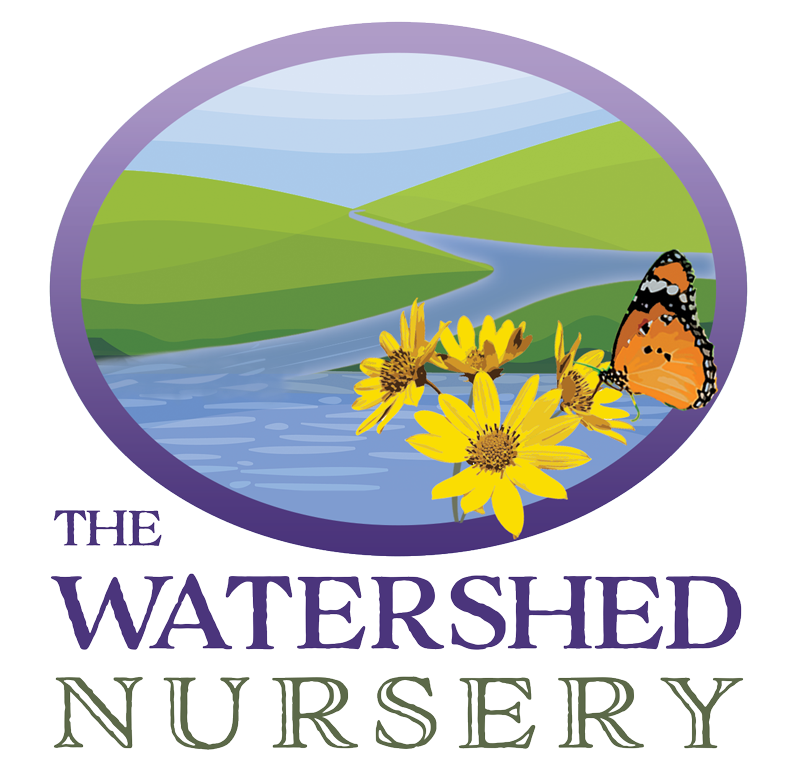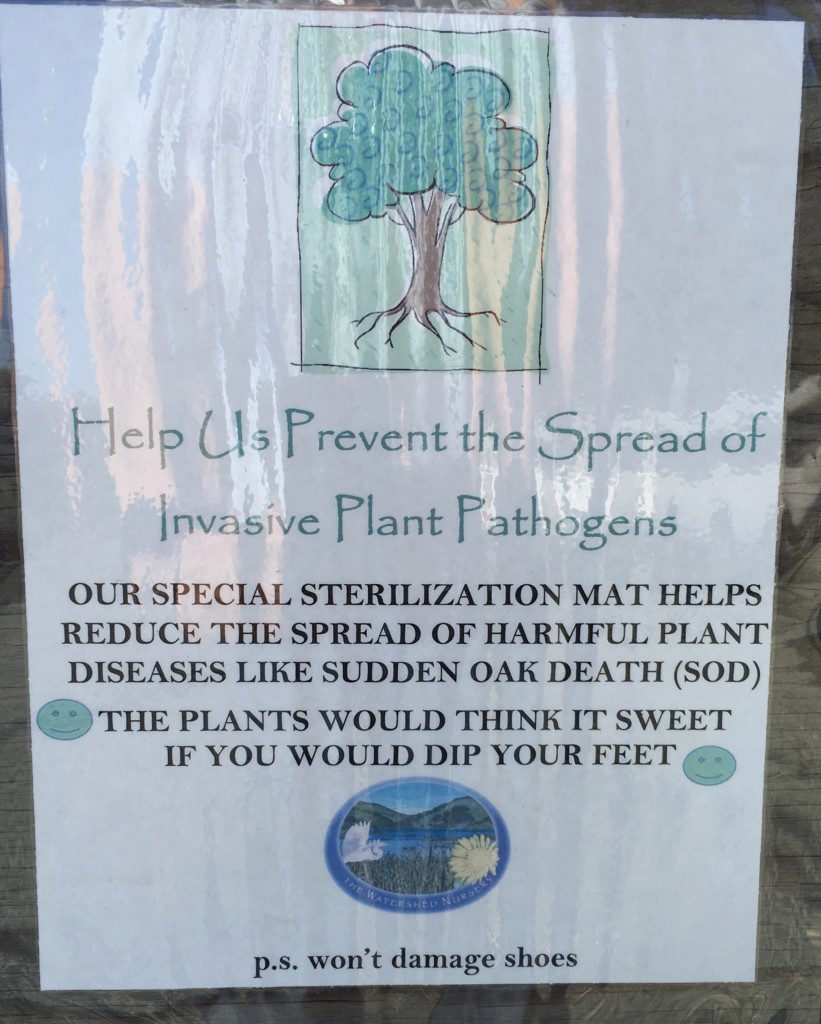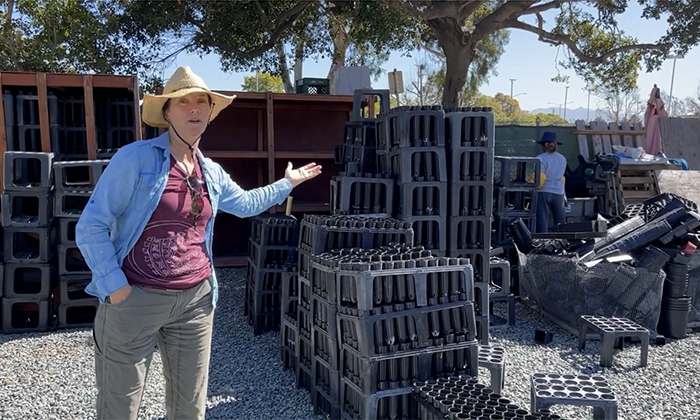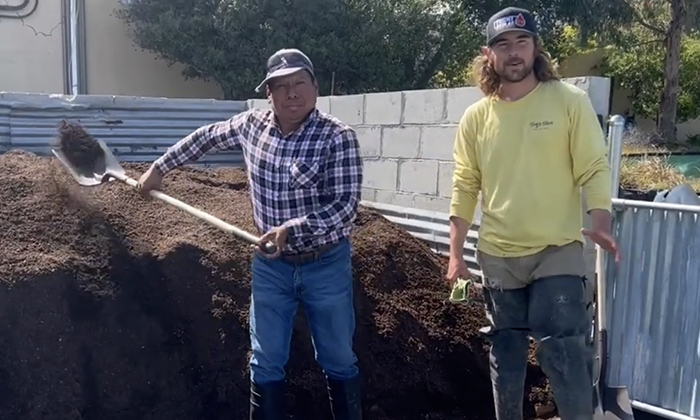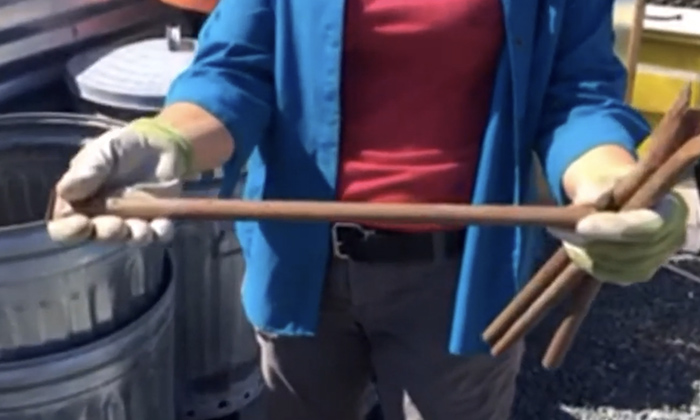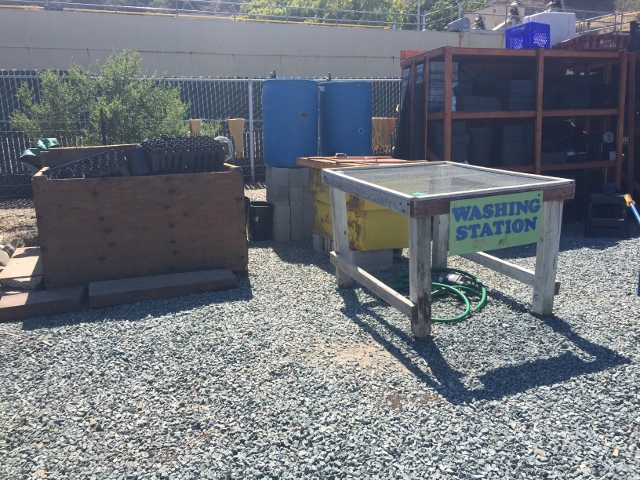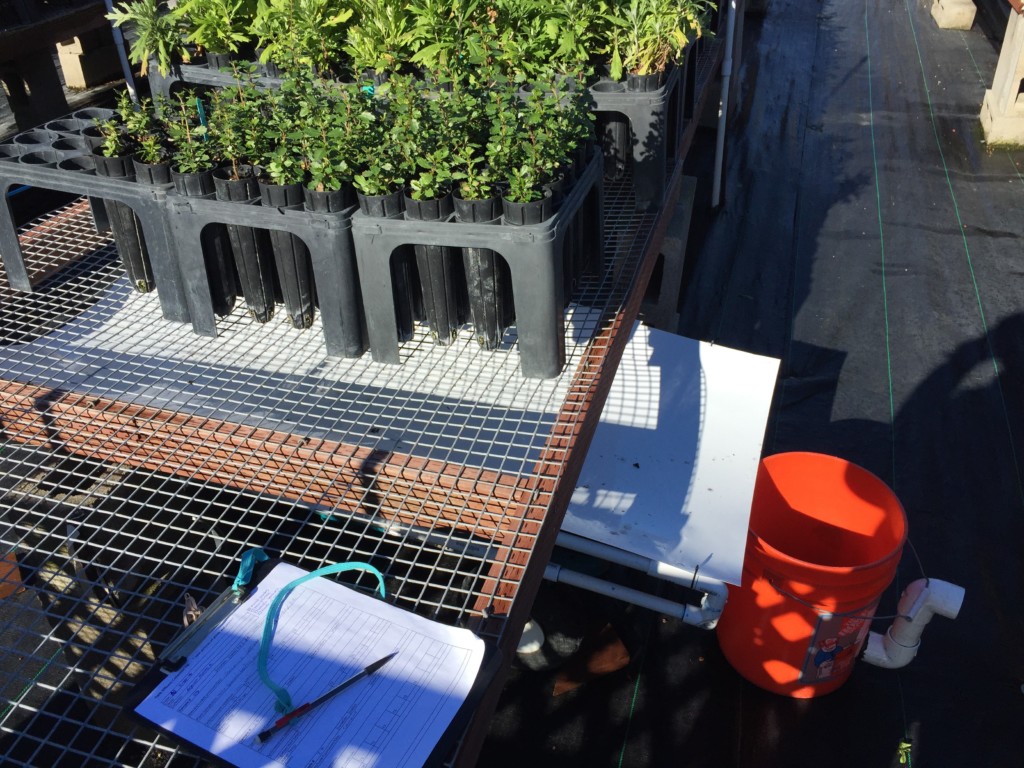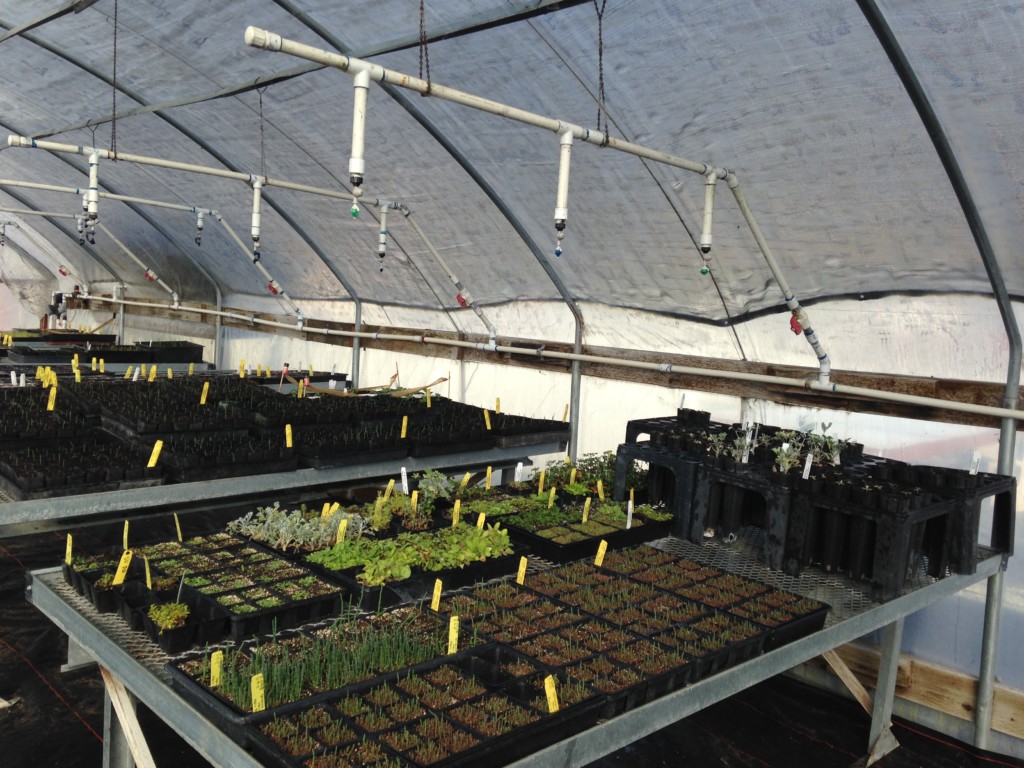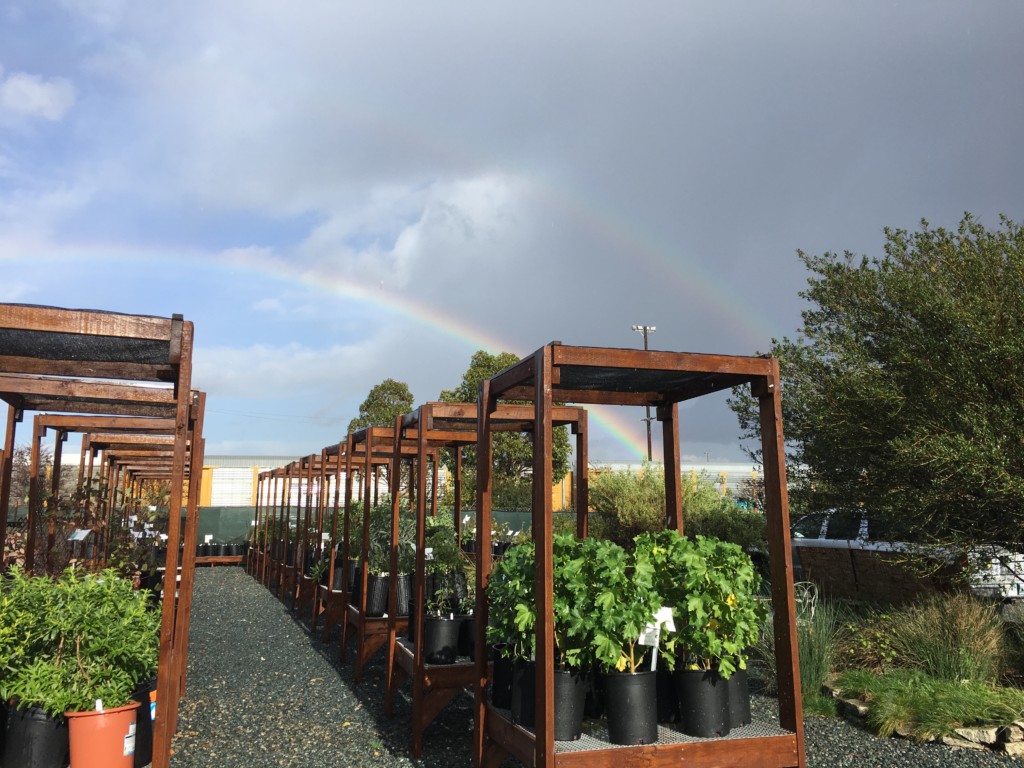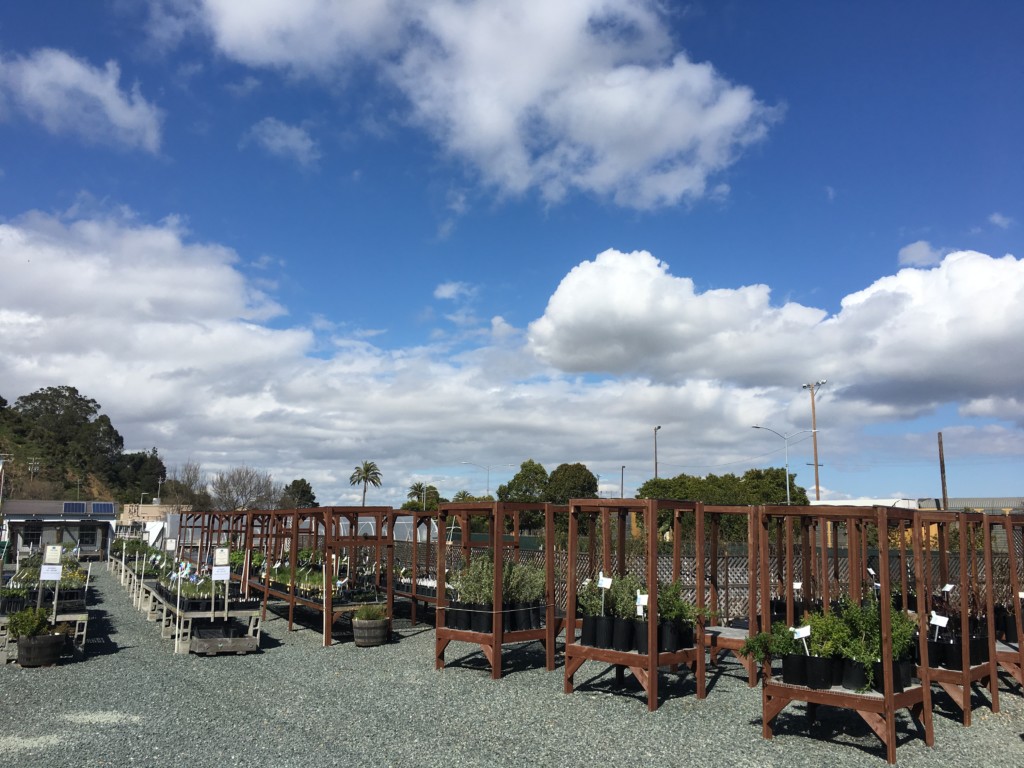The Watershed Nursery (TWN) is a restoration nursery leader in developing and implementing Best Management Practices (BMPs) to reduce the risk of introducing pathogens to restoration projects and residences through our container plant material. See our introductory videos.
A little history:
In December of 2013 Principal and Project Manager, Diana Benner, heard that material from a native plant nursery had introduced a novel pathogen called Phytophthora tentaculata to a restoration site. TWN had been aware of pathogen risks, especially in regard to Sudden Oak Death caused by Phytophthora ramorum, but this was the first confirmed occurrence of a native plant nursery’s restoration material being a vector for introducing a pathogen to a wildland. Although this was not material from TWN the possibility of this occurrence caused us an extreme amount of angst for us as an introduction like this would be entirely contrary to all of the mission and meaning in doing what we do.
After learning of this tragedy Diana contacted the California Native Nursery Network (CNNN) group to encourage them to organize a meeting with the function of educating local native plant propagators of this risk. In December of 2014 a symposium was hosted by CNNN and the Golden Gate National Recreation Area (GGNRA) and approximately 150 local restoration practitioners attended including not only nursery people but environmental consultants, contractors, and regulators.
The following March, 2015, the ‘Working Group on Phytophthoras in Native Habitat’ was formed. This voluntary coalition of native plant nursery managers, land management agencies, researchers, and non-profit organizations formed with the primary purpose to coordinate a comprehensive, unified program of management, monitoring, research, education and policy to minimize the spread of Phytophthora pathogens in restoration sites and native plant nurseries. Diana Benner was one of the original organizing members and continues to serve as a group leader.
One of the first priorities for the Working Group was to develop a group of Phytosanitary Best Management Practices developed with the input of all the represented specialists that would serve as a tool to nurseries and land managers. These “Guidelines to minimize Phytophthora pathogens in restoration nurseries” are now available at calyphytos.org. TWN has implemented these BMPs into our production practices and continually focus on optimizing the cleanliness of our plant material.
In addition to the development of the Phytosanitary BMPs the Working Group has been collaborating with the CNNN (of which Diana is now an organizing member) to host nursery field site visits between local native nurseries growing for restoration projects so that we can share our experience and strategies in implementing the BMPs within our varied circumstances and means. TWN hosted the first of these site visits in March of 2017.
TWN is passionate about providing the healthiest product possible and contributing to the enhancement, not detriment, of the amazing natural resources that exist in California.
BMP specifics:
Soil: We currently have implemented all the BMPs in all our production, project and retail material, except for the BMP specifying the use of heat-treated media. Due to the extra resources required to produce heat-treated media (see video) this BMP is implemented on a project specific basis and requires an additional charge. We do know the sources of our ingredients included in our regular potting media.
Testing: TWN has implemented random effluent pear bait Phytopthtora testing developed by Phytosphere Research, throughout our production. Additional project specific testing is a service available at an additional cost.
